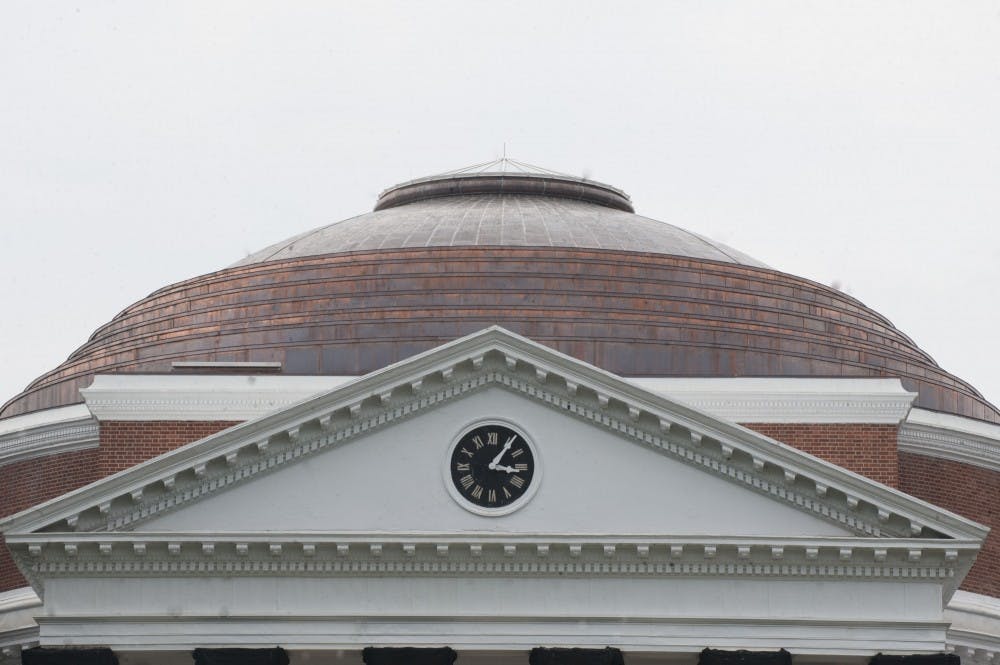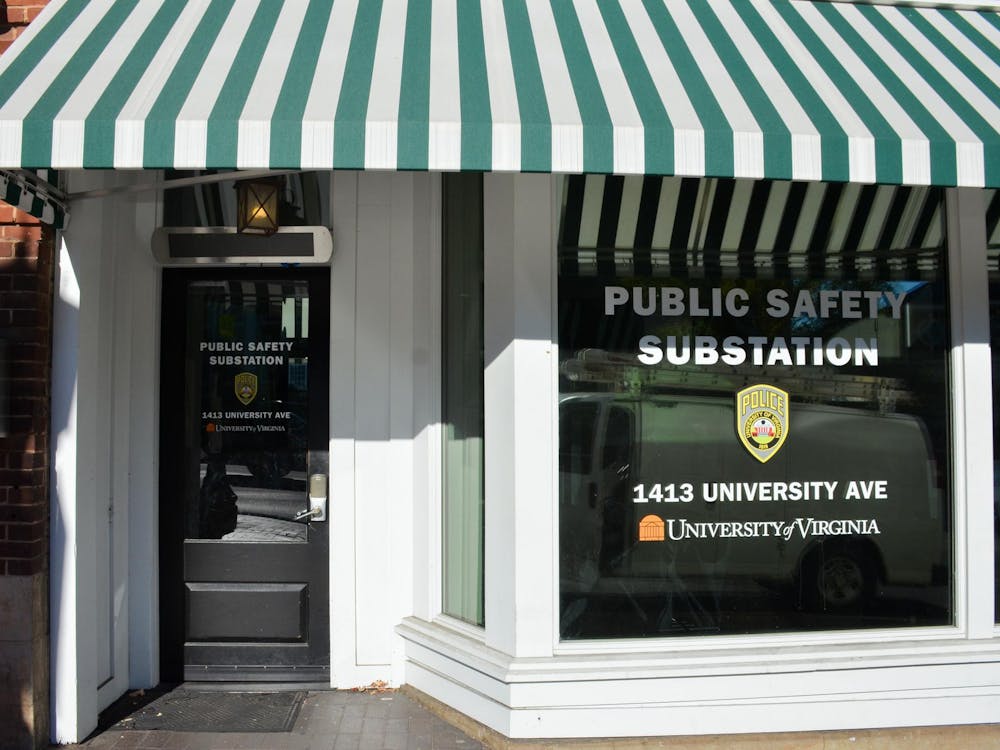The first phase of the University’s Rotunda restoration efforts are rapidly approaching completion. The renovations, which began in May 2012, are the landmark’s most comprehensive since it was rebuilt by renowned architectural firm McKim, Mead and White between 1895 and 1898, according to the project website.
After much debate around Grounds on whether or not it was necessary, the Rotunda roof is scheduled to be painted between September and October after basic preparations, said James Zehmer, a Historic Preservation Projects manager at the University. “The roof metal needs to be properly prepared and cleaned before the paint can be applied,” Zehmer said.
The University has led the $50.6 million restoration project as a jointly privately and publicly funded effort, having used a portion of the University’s endowment and annual gift funding to launch the initial planning and early execution of the renovation. Fundraising efforts have raised the majority of the private share of the project. Publicly, petitioning the Virginia General Assembly in 2010 initially raised $2.7 million toward the renovation process and produced another $24.1 million this spring.
Remaining renovations, after completion of the roof repair, will include exterior repairs at the porticos; elevator replacement; complete replacement of heating, cooling, electrical, lighting, plumbing and fire suppression systems; installation of security, data and audio/visual systems; and spatial improvements to facilitate access and maintenance of the new systems.
The renovated building will also have increased classroom and study spaces, handicap access to the terraces, renovated restrooms and replaced metal ceilings in the dome room equipped with acoustical plaster, Zehmer said.
Jody Lahendro, historic preservation architect for facilities management, said the restoration project is complicated by the lack of documentation from the original project and subsequent renovations in the 1970s. “Knowledge of the Rotunda constructed by Jefferson is limited and incomplete,” Lahendro said. “Documentation relies mainly on a handful of planning documents from Jefferson and his workman.”
Lahendro said problems after the 1970s restoration project began appearing in inspector reports within the past 20 years. Roof rusting, falling concrete on the side of the portico steps, a faulty elevator and high levels of humidity that caused mold in the dome room led to a need for the restoration project, Lahendro said.
Because of the size of the Rotunda, the University preservation architects said the renovation could not be completed in bits and pieces. “We knew we needed to start a capital project,” Lahendro said.
The renovation differs from other ongoing projects within the Academical Village, which are typically smaller in scale and paid for through historic preservation funds. In recent years, architects have used this fund for repairs to the Pavilions on the Lawn and West Range residences.
“Over the past several years we’ve renovated three Pavilions – IX, X and V,” Lahendro said. The historic preservation funds can accrue interest, allowing the University to use the interest to pay for smaller projects like these, he said.
The design work for the final phase of the Rotunda restoration project is already underway, Zehmer said. “We anticipate construction starting after Final Exercises 2014, and lasting two years,” he said.
Previous renovation projects resulted in discoveries about the Rotunda’s history. Behind a wall that contains two oven apertures within the building, workers discovered a room in the 1970s where chemistry experiments were performed when the Rotunda was previously used as a location for classes. Through the recent renovation, workers have been able to view the remaining brick from the original Rotunda structure, laid during the Jefferson years.






